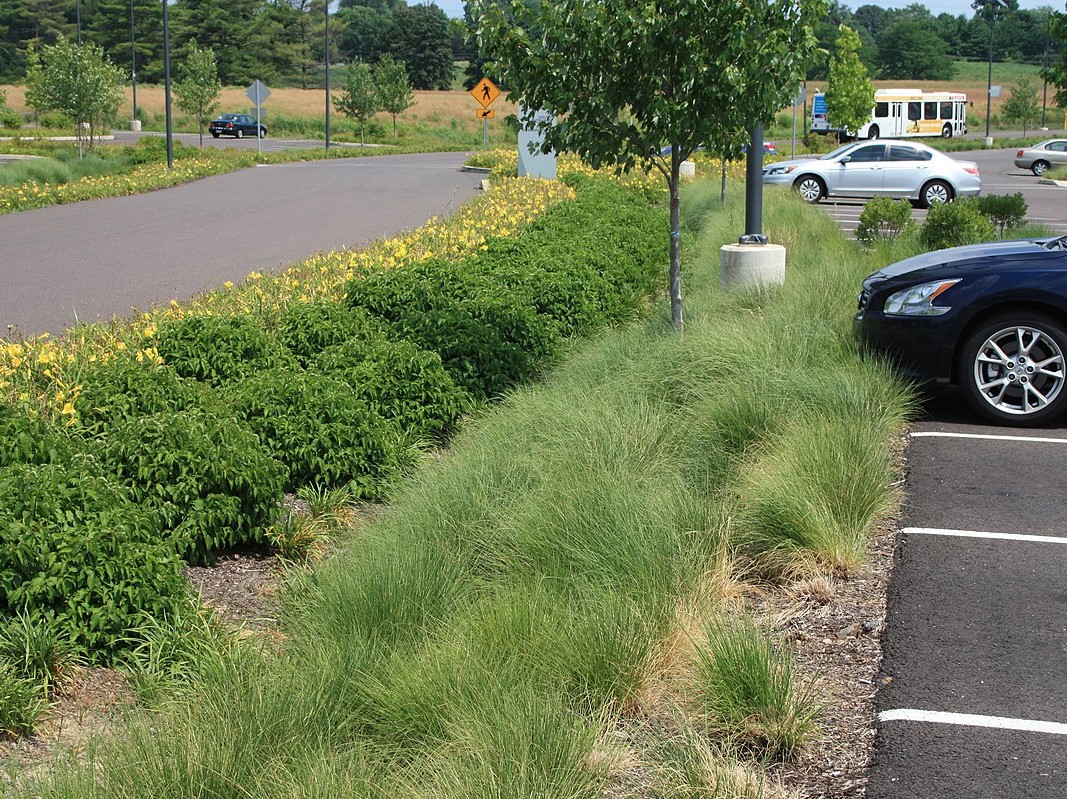
Infiltration Trench
Asset Type : Enhanced
Water Classification:
Stormwater
Combined Sewer Overflows
Stormwater
Combined Sewer Overflows
Construction Rank :
4
O&M Rank :
4
How it Works : Infiltration trenches are excavations that are lined with filter fabric and backfilled with aggregate. During runoff events water enters the trench where it is initially stored and then infiltrated into surrounding soil.
O&M Required : The drainage area of the trench will have to be managed to reduce the sediment load. Utilities should schedule times each year (i.e. once a quarter) to inspect the trench for trash, excessive sediment, over grown plants etc. Trenches should also be checked after larger rain events (i.e. 1.5 inches). There is a high failure rate due to poor maintenance due the high clogging potential.
Design Considerations : Trenches should be excavated to a depth of approximately 3-8’ and filled with washed aggregate of a diameter between approximately 1.5 to 3 inches. The surface of the trench may be covered by aggregate, pea gravel, or vegetation. Pea gravel and vegetation both increase sediment filtering and prolong the life of the trench. If a vegetated surface is desired, it should be installed in approximately one foot of soil. A vegetated filter strip at least 20 feet wide should be constructed upslope from the trench, to increase sediment capture and prolong the life of the trench. Simple observation wells, constructed of PVC pipe, allow monitoring of water levels and evaluation of performance. Flow into the trench should be evenly distributed.
Costs : Low – approximate costs are estimated between $1.00 to $1.50 per cubic foot (USEPA, 1999) there are cost challenges depending on how deep a trench is constructed. The trench will likely required heavy equipment be used. At a certain depth trench boxes may be required to retain the side walls during construction.
Benefits : An infiltration trench can effectively remove or reduce many pollutants, including suspended solids, bacteria, and trace metals. It reduces runoff volumes during storm events and increases baseflow in nearby streams. It can also be easily incorporated into site landscaping.
References:
Image by: Montgomery County Planning Commission via https://www.flickr.com/photos/75012107@N05/14660267252/